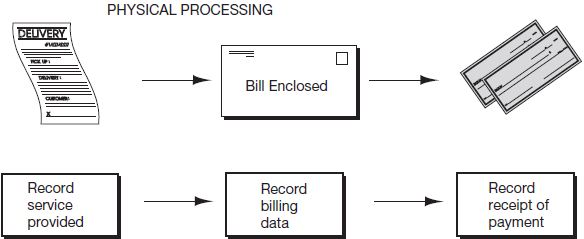Throughout the preceding discussion of event data processing, the focus was on events that take place within various business processes. Once these events have been identified, data that describe the events are collected, organized, manipulated, summarized, stored, and made available for retrieval. Traditionally, computerized Information Systems were designed around particular events called transactions, those business activities that have an economic impact on the firm. These include sales, payroll, accounts payable, and other typical financial transactions. The data that are recorded by a transaction processing system reflect the minimal information needed to represent each transaction, and are stored in a file along with the records of all of the other transactions of the same type. This transaction orientation led to the dominance of “filecentric” techniques for systems design, an approach discussed later in this chapter. This traditional approach to transaction processing worked well when technology was expensive and record keeping was not as sophisticated as it is today.

- 4158 reads






